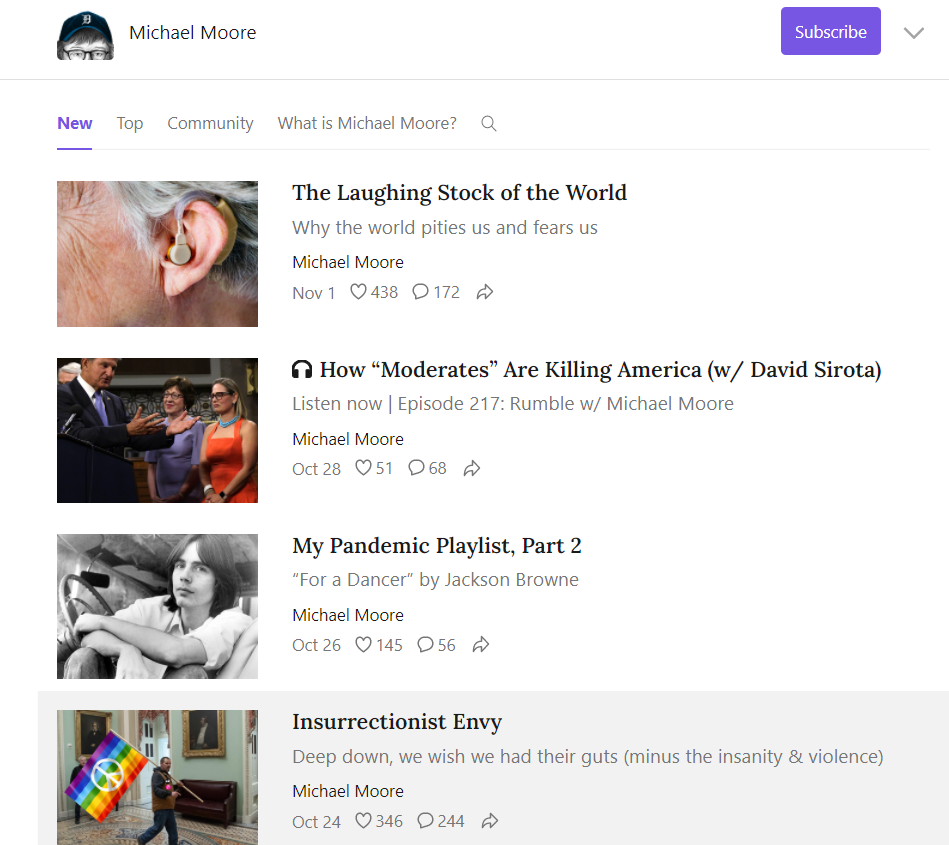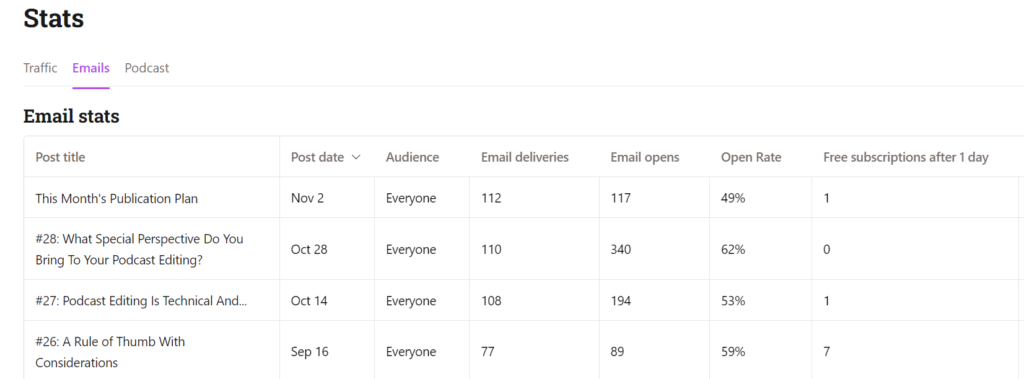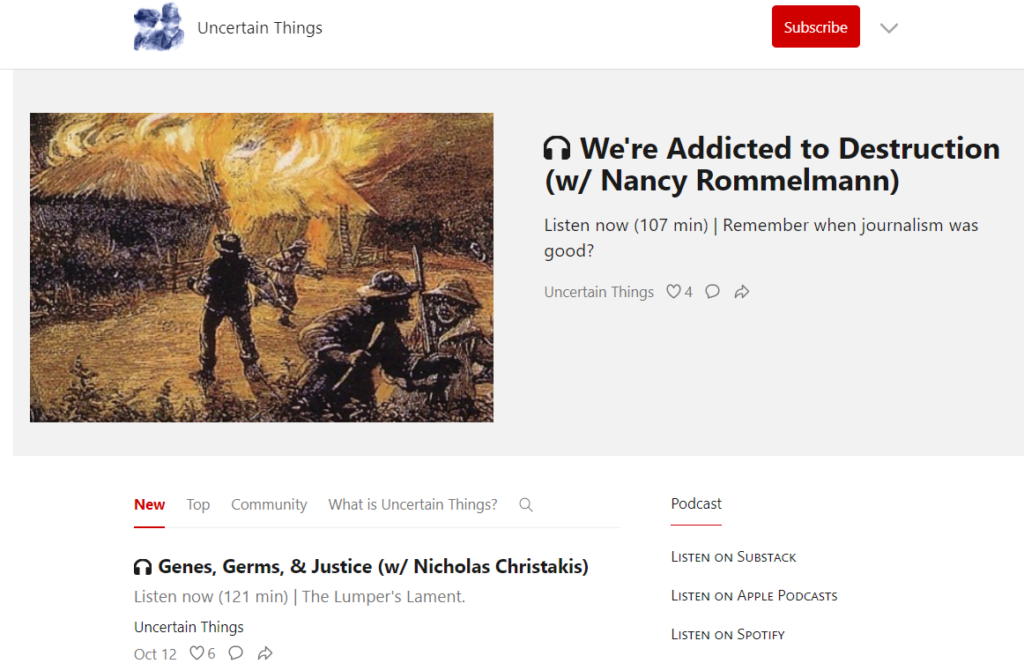Substack for Podcasts: Pros, Cons, & Case Studies
Substack is “the home of great writing” that was created to help independent writers create newsletters sans gatekeepers and monetize easily. For the first three years of their service, they did just that, attracting 500,000 paying subscribers and many free ones, too. And then, in December 2020, they added an audio hosting function, thereby simplifying our podcast and newsletter platform workflow.
Let’s look at how Substack is being used to free up podcasters’ time so that we can stay in touch with our listeners AND focus on creating and less time formatting.
How Can A Podcast Newsletter Help Your Podcast?
Before we get to Substack specifically, we need to address the topic of podcast newsletters. Think back: have you made a podcast announcement on the socials one week, only to have someone DM or comment days or weeks later telling you that they didn’t see it? It’s frustrating. We spend time planning and managing our socials, but we don’t or can’t control them well enough. Let’s face it. Social media is a fast-paced, loud space where it’s great to find new listeners, but it’s no longer a place to keep in touch with them easily.
It’s too fast.
It’s too loud.
And we can’t control what they see nearly enough.
You need some other way to engage with your listeners that’s certain, reliable, and in your control. And that, my podfriends, is a newsletter.
Newsletters go straight to your followers/listeners’ email inbox. The chances that they will see it, open it, and read it are significantly higher than on social media. This is the best way to work around the social media algorithm problem. That’s not to say you should abandon social. You can still meet and connect there, and then move them over to your podcast newsletter, when possible.
Substack for Podcasts: The Benefits
Substack Can Streamline the Engagement Loop
THE strongest case for using Substack for your podcast newsletter, in my humble opinion, is shortening the engagement loop. I know that you know that when you put your call-to-actions (CTAs) out into the world, the return is small at best. What if you could make these replies easier and more plentiful?
Lauren Passell has hosted the amazing Podcast The Newsletter on Substack for the past four years and was happy to share one of her favorite Substack features. “There’s a community feature so I can send out a newsletter with a single question (like “What did you listen to this week?”), and people can respond and talk to one another in the comments on the site.”
Combine this powerful customization with the other advantages below, and your listenership engagement is bound to increase.
The Substack Platform Makes It Easy to Create, Read and Listen
The Substack platform is ridiculously easy to create and consume. Let me show you. Filmmaker Michael Moore started hosting his podcast newsletter on Substack in August 2021. Here’s what his page looks like. One gorgeous aspect of Substack’s podcast hosting is that not only do your podcast episodes appear on these podcast newsletter pages, but you can use your Substack RSS feed to distribute the podcast wherever you wish. This means that listeners can find you anywhere they’re listening to podcasts.

This looks very similar to what many summary podcast episode blog posts look like, doesn’t it? But I can tell you from personal experience that it’s a lot faster to create this on Substack than any blogging platform I’ve used. For example, when I add a YouTube video link (not with an embed code but with the share link) to the Substack page, it adds the video automatically. That kind of simplicity exists for many of the creative options you’re likely to use for your podcast newsletter on Substack.
Substack for Podcasts – Discoverability Benefits
Similar to how podcast titles can help with discoverability, so can using this popular platform. There are newsletter platforms that are popular with users, but what I’m finding is that Substack is popular with readers. And readers can be (and are!) podcast listeners. This is a fine distinction but an important one. Here’s where I’d like to show you my own podcast newsletter when I switched to Substack and how it greatly impacted discoverability.
My newsletter open rates are about the same as they were on my previous platform. What changed is the email opens. For example, for issue #27 (below), I emailed 108 subscribers, but there were 194 email opens. I had to think about that for a minute. This means that some of those 108 subscribers were email forwarding the issue, and others were opening it. Issue #28’s email opens were even more promising, with 110 subscribers forwarding the issue to 240 email openers. From these email forwards, there’s been a slow and steady subscription incline.

Substack Is a Strong Alternative to Ad Model Newsletters
The Podcast Index is getting more and more attention from podcasters because of its value-for-value monetization features that empower podcasters to collect monetary support directly from their listeners. A similar system is available on Substack but currently in a subscription-based form.
Vanessa Quirk shared her favorite aspect of Substack for her and Adaam James Levin-Areddy’s podcast, Uncertain Things, which they started during the pandemic. “It makes reading a joy again. It has a clean presentation. No ads. No unnecessary design distractions. It’s lightning fast – both on the publisher side and the reader side. The seamless integration of audio (embeddable player!) is a huge plus.”
And the platform aligns with their podcast ethos also, which is abundantly clear when you listen to the media health discussions in their episodes. “It pushes away some of the most noxious externalities of the ad model.” Vanessa shared. And looking at the below format, can we really argue with her?

Substack Makes Podcast Newsletter Monetization Easy
Substack not only offers a free option but also has a variety of ways to monetize your podcast newsletter. Right now, Substack lets you publish free and paid newsletters and podcasts. They do currently charge a 10% fee on your subscriptions. If that’s a deal-breaker for you, Ghost is an alternative newsletter platform that comes highly recommended.
Check out these spaces to stay on top of any changes to Substack:
Critiques of Substack
It’s important that you know some of the critiques of the platform. But to be honest, I saw far more positive comments than negative ones when I was researching Substack for my own use as well as for this article over the past few months.
- lack of sophisticated podcast analytics
- little (if any) mean comments intervention/protection
- 10% fee for subscriptions (as mentioned above)
- formatting limitations (fonts, images)
- takes attention away from your website
- limited user support help (outside tutorials)
Is Substack for Podcasts: Next Steps
Substack is a great platform to run an email list that’s linked to your podcast. It isn’t the only option on the market, though, so check out Email Marketing for Podcasts if you’d like to shop around a little.
We also have a guide on How to Write Great Emails for Your Podcast, which can help get you up and running whether you choose Substack or somewhere else!

